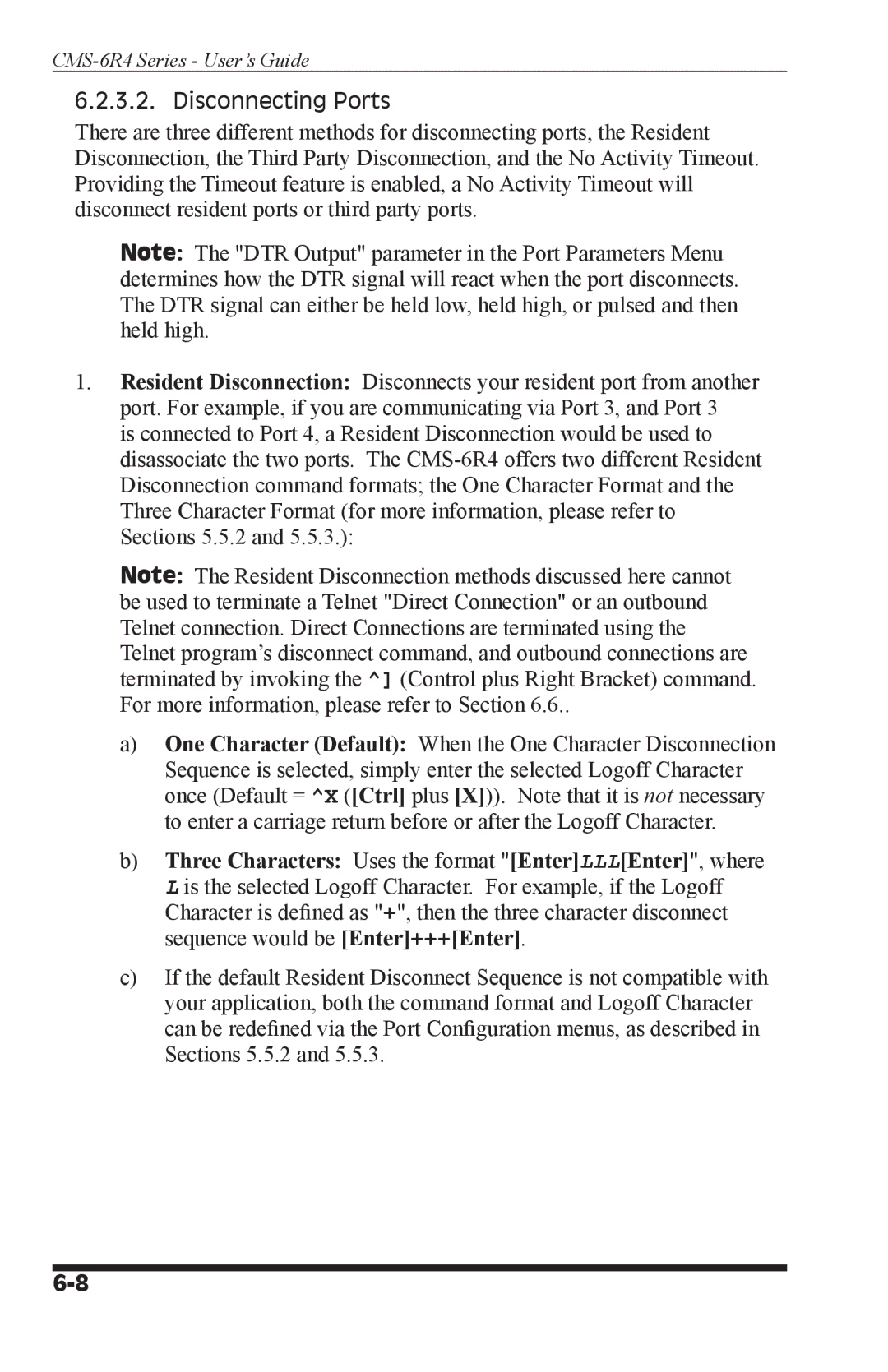
CMS-6R4 Series - User’s Guide
6.2.3.2. Disconnecting Ports
There are three different methods for disconnecting ports, the Resident Disconnection, the Third Party Disconnection, and the No Activity Timeout. Providing the Timeout feature is enabled, a No Activity Timeout will disconnect resident ports or third party ports.
Note: The "DTR Output" parameter in the Port Parameters Menu determines how the DTR signal will react when the port disconnects. The DTR signal can either be held low, held high, or pulsed and then held high.
1.Resident Disconnection: Disconnects your resident port from another port. For example, if you are communicating via Port 3, and Port 3
is connected to Port 4, a Resident Disconnection would be used to disassociate the two ports. The
Note: The Resident Disconnection methods discussed here cannot be used to terminate a Telnet "Direct Connection" or an outbound Telnet connection. Direct Connections are terminated using the Telnet program’s disconnect command, and outbound connections are terminated by invoking the ^] (Control plus Right Bracket) command. For more information, please refer to Section 6.6..
a)One Character (Default): When the One Character Disconnection Sequence is selected, simply enter the selected Logoff Character once (Default = ^X ([Ctrl] plus [X])). Note that it is not necessary to enter a carriage return before or after the Logoff Character.
b)Three Characters: Uses the format "[Enter]LLL[Enter]", where
L is the selected Logoff Character. For example, if the Logoff Character is defined as "+", then the three character disconnect sequence would be [Enter]+++[Enter].
c)If the default Resident Disconnect Sequence is not compatible with your application, both the command format and Logoff Character can be redefined via the Port Configuration menus, as described in Sections 5.5.2 and 5.5.3.
